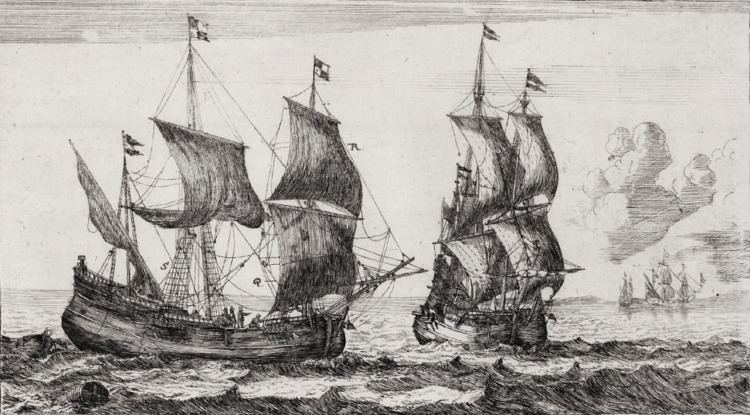Name Leendert Hasenbosch | Died 1725 | |
 | ||
Leendert Hasenbosch, (c.1695–probably end of 1725) was a Dutch employee of the Dutch East India Company (VOC) who was set ashore as a castaway on uninhabited Ascension Island in the South Atlantic Ocean, as a punishment for sodomy. He wrote a diary until his death.
Contents
Early life
Leendert Hasenbosch was likely born in The Hague, Holland in 1695. Around the year 1709 his father, a widower, moved himself and his three daughters to Batavia in the Dutch East Indies (Modern Indonesia) while Leendert stayed in Holland. On 17 January 1714, Hasenbosch became a soldier of the Dutch East India Company, (Vereenigde Oost-Indische Compagnie, henceforth VOC) and boarded the flute-ship "Korssloot" in Enkhuizen bound for Batavia where he served for about a year. From 1715 to 1720 he served in Cochin, a Dutch possession at the time. In 1720 he returned to Batavia and was promoted to corporal. He later became a military writer, responsible for small-scale bookkeeping. In 1724, he took a position aboard a VOC ship as the ship's bookkeeper. On 17 April 1725, Hasenboch was convicted of sodomy following the ship's compulsory stop in Cape Town. On 5 May 1725, he was set ashore on Ascension Island as punishment.
Cast away life
During his time as a castaway, Hasenbosch kept a diary. He began with a tent, a month's-worth of water, some seeds, instruments, prayer books, clothing and writing materials. He searched the barren island for water. Unable to find any, he began drinking the blood of green turtles and seabirds, as well as his own urine. He likely died of thirst after about six months.
Ascension Island does have two sources of fresh water: a strong water spring in the high interior of the island (in what is now called Breakneck Valley), and a much smaller water source named Dampier's Drip. One of these two water sources allowed some sixty men from HMS Roebuck to survive a shipwreck on Ascension for two months starting in February 1701.
The legend
In January 1726 British sailors discovered the castaway's tent and things, including the diary in Dutch. The British concluded that a Dutchman had been set ashore as a punishment for sodomy. They did not find a skeleton but they were pretty sure that the man had died of thirst. The diary was brought to Britain.
In 1726 the diary was first published under the title "Sodomy Punish'd". In 1728 another version, entitled "An Authentick Relation", was published. The version of 1726 mentions the name of the castaway, misspelled as "Leondert Hussenlosch" but the version of 1728 states that the man's name is unknown. The qualities of both translations are uncertain since the original diary has been lost. Apart from entries about desperate searches for water and firewood, a few entries mention the man's act of sodomy. A few entries can be interpreted as reflections of a guilty conscience, including the apparitions of demons and former friends and acquaintances. In 1730 another version was published under the title "The Just Vengeance of Heaven Exemplify'd". This version contains many extra anti-sodomy passages as well as many extra demons harassing the castaway. The publisher also wrote that the castaway's skeleton would have been found alongside the diary – which never happened.
In 1976 the American author Peter Agnos published "The Queer Dutchman", an extension and embellishment of the version of 1730. Moreover, Peter Agnos fabricated 18th century personalities (the castaway, his partner in his act of sodomy, his captain, etc.) and even 18th century Dutch documents.
Many authors about sodomy, Ascension Island or castaway-stories read either the version of 1730 or the version of 1976 and decided to include parts in their own publications, not realising they were quoting from a fake story.
In 2002 a Dutch book "Een Hollandse Robinson Crusoe" was published, written by the Dutch historian Michiel Koolbergen (1953–2002) after he had done many years of research in Dutch and British archives; sadly, Koolbergen was already dead at the moment of publication. Koolbergen had identified the castaway as "Leendert Hasenbosch" by his work in archives; Koolbergen was aware of all English versions of the diary except that of 1726. Koolbergen's book also contained the relevant texts in the logs of the two English ships whose crews had found the diary in January 1726.
In 2006 the full story was – with the support of Koolbergen's family and publisher – published by Alex Ritsema, with the book "A Dutch Castaway on Ascension Island in 1725"; a second, revised edition was printed in 2010.
